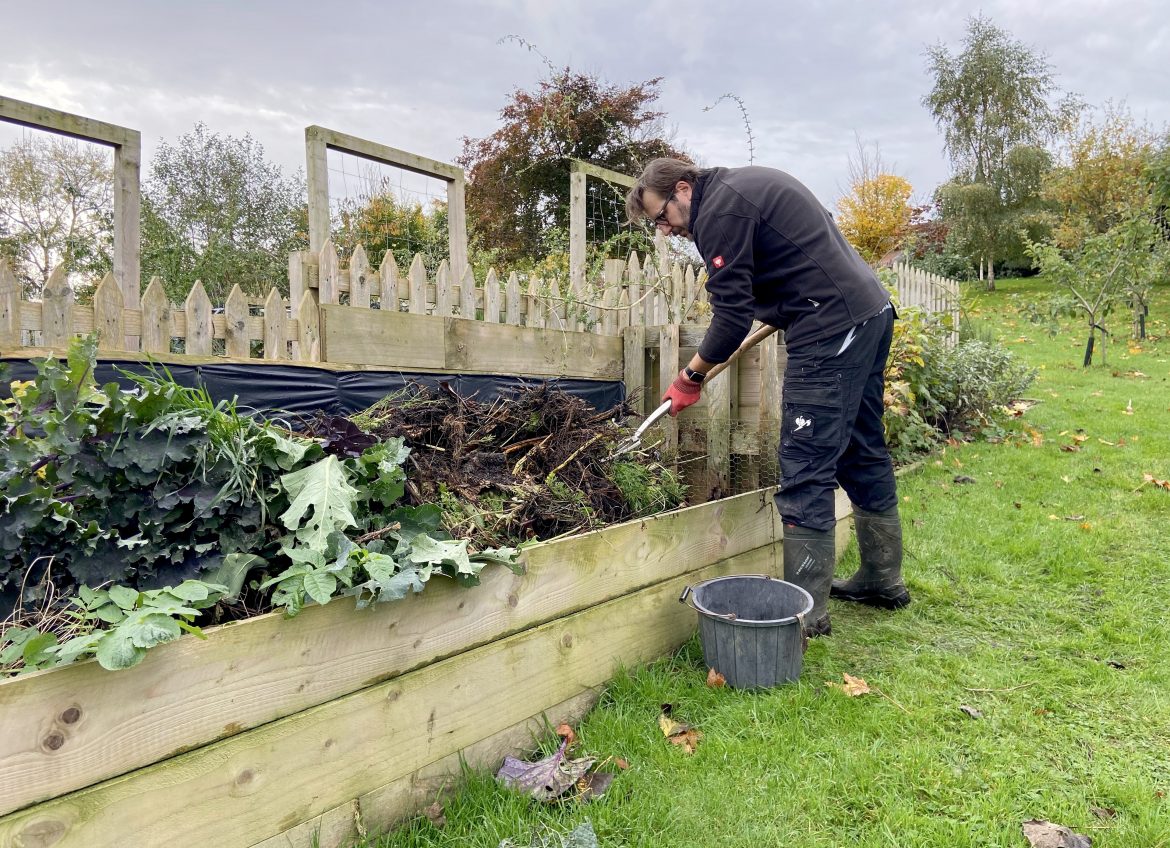The process of making your own compost is actually quite magical. You put vegetable, fruit and kitchen scraps, plants, leaves and other organic matter on a heap or in a bin, and millions of microorganisms break down the materials into their most basic components.
We have two composting areas on our property. The one featured in the video takes all our kitchen waste as well as all the waste from the vegetable garden, and the compost this makes is used to top up our veg beds. It’s remarkable how much waste this compost bin can take, and every year it makes us about one cubic metre of organic, rich compost.
To make compost you need five ingredients: water, carbon, air, nitrogen and organisms. If any of them are not present composting will not take place or it will take place painfully slow.
The beauty of making your own compost is that you can transform almost everything that grows in your garden into compost, and it’s a circular process. Essentially, you need a good mix of two composting materials:
- Green waste — kitchen scraps, grass clippings, plant cuttings, newly fallen leaves and animal manure (we only use rabbit and pheasant poop)
- Brown waste – paper, non-laminated cardboard, twigs, branches, wood chips, tree bark, sawdust and dried leaves.
The key, we’ve discovered, to making good quality compost is to treat it like your own diet. The greater the variety of ingredients you add to your heap, the more nutritious and balanced the compost will be.
So what do we add to our compost heat from our cooking and general consumption? Just about everything is the answer: coffee grounds, tea leaves, fruit peels, vegetable leftovers and scraps, and eggshells. Coffee and tea are high in nitrogen, eggshells are loaded with calcium that helps build plant cell walls, and fruit and vegetable peels are packed with carbon.
We’ve become good at avoiding waste as part of our sustainable living, but if you’ve got flour, rice, seeds or grain that has passed its sell-by date it can all go onto the compost heat. While food that’s gone off may not be hugely appealing to us as humans, the microbes on your compost heap aren’t as picky and they’ll get to work on this and break everything down.
Even things like freezer-burned fruit or veg, expired yeast, condiments, mouldy bread, malt used in home brewing and stale spices are safe to add to your compost heap.
If, like us, you have an outdoor compost heap, you must allocate time to turn the compost pile over and a pitchfork is the tool of choice because its tines can pierce through materials and lift clumps of compost ingredients, which is what you want to do to keep it aerated and light. Our favourite pitch fork is the Draper Heritage 99013 Stainless Steel Digging Fork with ash handle.
Fleece and trousers I’m wearing in the video are from Engelbert Strauss.
